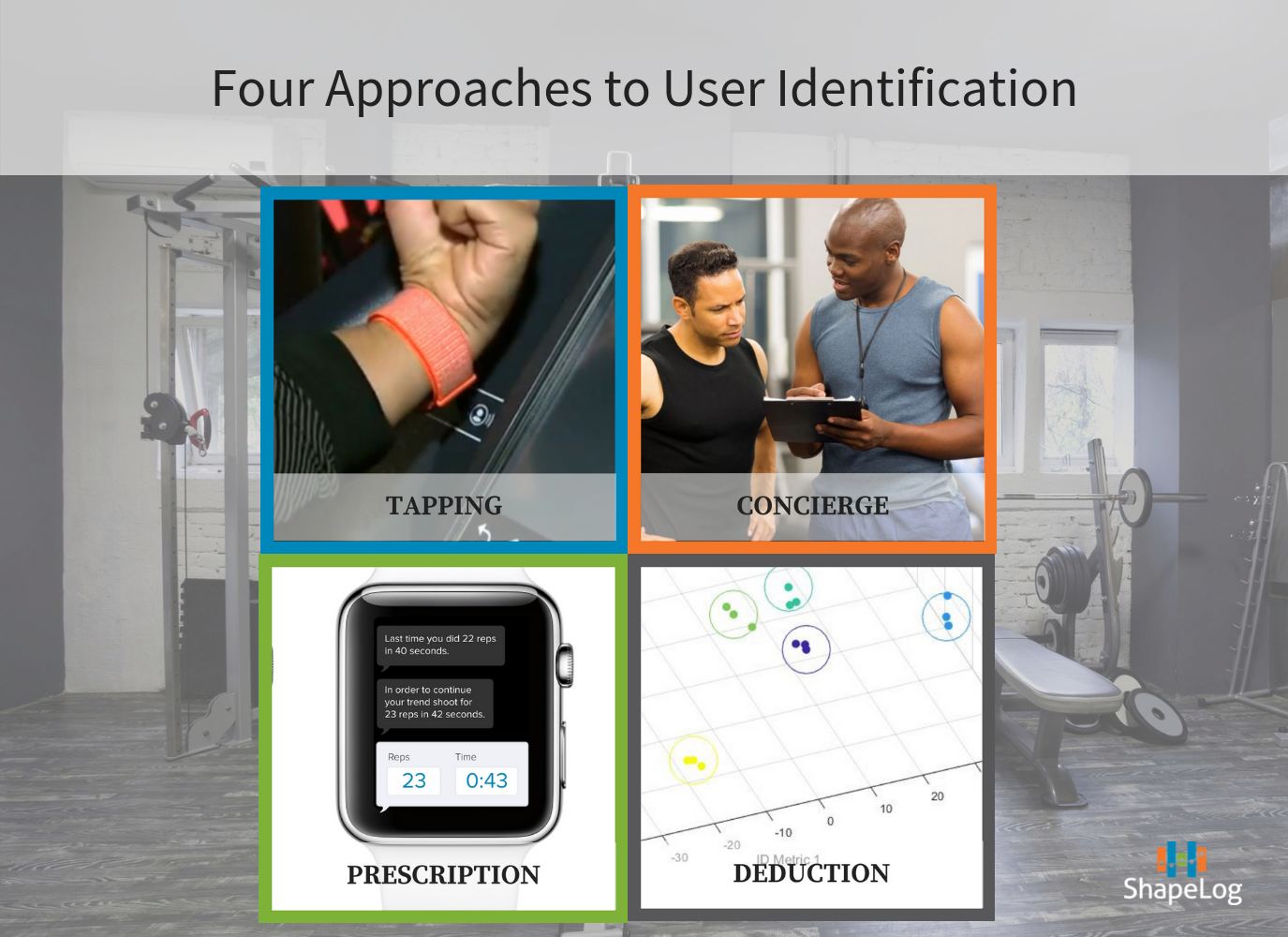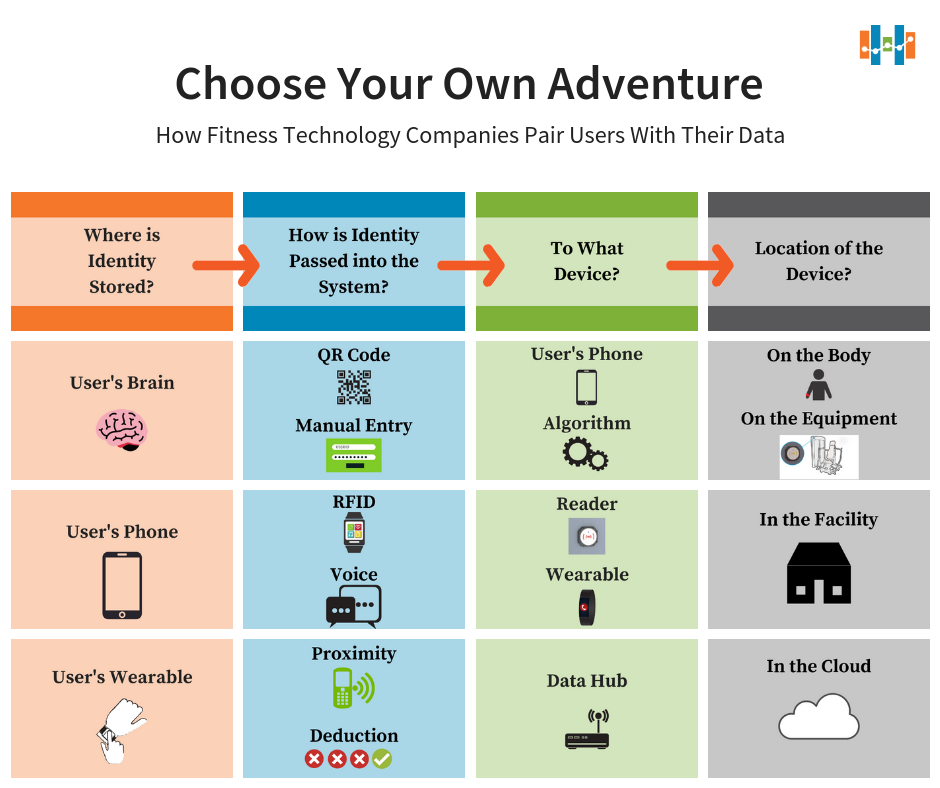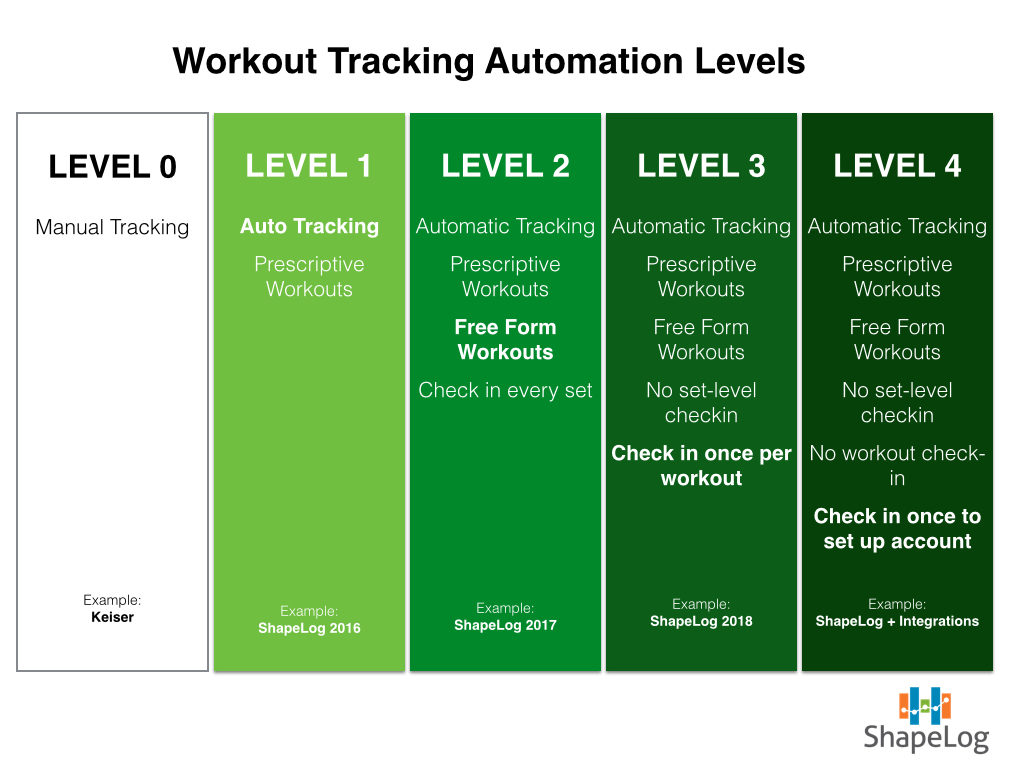Definitive Guide to User Identification in Connected Strength Training

Friction kills retention. So every company selling a fitness experience is obsessive about minimizing friction.
Strength workouts are more varied than cardio workouts – you’re moving to different stations constantly – so there are more ‘check in’ points. Checking in = friction. All that friction adds up to a crappy experience that only the most dedicated folks will put up with. This is why connected strength training lags decades behind connected cardio.
We’re on the verge of solving the friction problem in connected strength training. Matrix, eGym, Technogym and others have brought connected strength solutions into the marketplace – consumers are getting a taste and they want more.
Frictionless user identification is the last hurdle. We created this guide to as a framework for talking about user identification. If we can all speak the same language it will help the product development and sales teams bringing connected strength training to customers.
Four Approaches to User Identification
There are really just four primary approaches to connect a user to their data in a connected strength training environment. Let’s break each of them down to make sure we’re on the same page:
 1. Tapping – The most common and most varied approach to user identification. This is the approach currently taken by Matrix, eGym, and Technogym.
1. Tapping – The most common and most varied approach to user identification. This is the approach currently taken by Matrix, eGym, and Technogym.
Examples of things you can TAP:
- Finger on a display; ‘punch in your code or hit a button’
- Apple Watch GymKit integration with Technogym and Life Fitness
- RFID Check-In in the Matrix Intelligent Training Console
- Your phone on a QR Code
- Finger to an app on your phone
 2. Concierge – This basically means, “pay a trainer to do it”. Paying a human being to capture the information is the most expensive, most luxurious way to connect a user to their data. This is the approach taken by high touch clubs like Exercise Coach, rehabilitation clinics, and personal trainers everywhere.
2. Concierge – This basically means, “pay a trainer to do it”. Paying a human being to capture the information is the most expensive, most luxurious way to connect a user to their data. This is the approach taken by high touch clubs like Exercise Coach, rehabilitation clinics, and personal trainers everywhere.
Examples of Concierge:
-
- Physical therapist records manually
- Personal trainer taps data into software
 3. Prescription – By giving the user a prescribed path to follow – and trusting them to follow it – you eliminate the need for user input. In this approach you constrain each individual user to a single exercise, eliminating the need to tap or guess. ShapeLog has been prescribing circuit workouts for more than two years as a way to capture strength training data in a frictionless way. Some people absolutely love it – they want to be told what to do! – while others find it constraining and unappealing.
3. Prescription – By giving the user a prescribed path to follow – and trusting them to follow it – you eliminate the need for user input. In this approach you constrain each individual user to a single exercise, eliminating the need to tap or guess. ShapeLog has been prescribing circuit workouts for more than two years as a way to capture strength training data in a frictionless way. Some people absolutely love it – they want to be told what to do! – while others find it constraining and unappealing.
Examples of Prescription:
-
- Coaching app tells the user where to go and what to do next
- Crossfit workout of the day
 4. Deduction – We call this ‘automatic user identification’. By passing the data through a series of filters – assuming you have the right kind of data and the right kind of filters – you can confidently arrive at a single possible user.
4. Deduction – We call this ‘automatic user identification’. By passing the data through a series of filters – assuming you have the right kind of data and the right kind of filters – you can confidently arrive at a single possible user.
Example of filtering system capable of identifying a single user via Deduction:
-
- Check-in data from the club – who is present?
-
- Who is NOT currently doing something else?
-
- Who is LIKELY to be lifting?
-
- Range of motion
-
- Weight setting on an exercise
- Ability to do work over the course of a set
Every Approach Represents an Opportunity
All four approaches to user identification have the potential to facilitate a delightful experience. “Concierge” is the most mature and most common. People will always desire a human connection and good personal trainers will always be in demand. The “Concierge” model is well understood.
When it comes to emerging technology, “Tapping” gets the most attention. The Apple Watch GymKit is an example of a ‘Tap’ approach that feels special and easy to some users. Some top clubs have jumped into RFID with both feet, and provide members with a wearable device that serves as their ‘master key’ to the club experience. Disney – the greatest user experience provider on the planet – does this with their ‘magic band’ bracelet. QR codes are making a comeback as smartphone software has gotten better at handling the requests. As people grow more comfortable talking to robot assistants, voice has become a sexy form of ‘Tap’ that replaces fingers or special hardware. Beacons and cameras represent the pinnacle of a ‘Tap’ experience. Cameras and facial recognition infrastructure that is inexpensive and powerful enough to offer bulletproof tracking at scale will be game changing. The frictionless ‘Tap’.
The evolution of “Tapping” helps developers and product designers, but we believe “Prescription” and “Deduction” are relatively overlooked and create an opportunity for creative new products and experiences.
Every great fitness trend has an aspect of “Prescription”. BeachBody, Billy Blanks, Richard Simmons, Jane Fonda, Peloton, every celebrity coach – they all build audiences by telling you what to do. Most people want to be told what to do – it’s what people expect from a coach. When you do this type of coaching at scale it has traditionally been a one-way relationship, with content flowing from the coach to the user with no feedback about performance. Tony can’t really see what you’re doing when his P90X DVD is playing on your computer. He’s funny and he’s talking to you, but you can’t talk back or ask questions. If you can actually trust the user not to cheat, then a frictionless, responsive, two-way coaching experience is easy to deliver. If you tell a user to do a squat, then you see squat data, can you trust that it was the same user.
Fitness Tech Autonomy Rating System: Borrowing Language from Autonomous Driving
There are huge near-term opportunities in “Tapping“, “Concierge“, and “Prescription“, but we believe “Deduction” is the solution built for the future. We’re very interested in doing this with your fitness data, and we’ve actually proven that we can do it.
Just as the car industry developed a rating scale from 0 to 5 to allow for apples-to-apples conversations about autonomous vehicles (e.g. “Volvo just committed to getting to Level 4 by 2020, can you believe it?”) we’ve set forth a similar rating system for fitness technology. Here’s the rating system:
Today there are a lot of really compelling Level 0 (Concierge) and Level 1 (Prescription) experiences. Prescribing a specific workout is an awesome hack we and others have used to automate tracking in a relatively low-tech way. We tell you to do something and assume it was you that did it. That’s how the eGym circuit works and how CrossFit uses time as the only variable in their workout tracking. By constraining the variables you make tracking easier. But this system isn’t flexible, so it will always have limited appeal.
Examples of Level 4 Workout Tracking Automation
User creates account, then never checks in again
-
- Fitbit and other wearable devices (steps only)
- ShapeLog iOS user app after 4+ workouts with location tracking enabled
This Guide is for Fitness Design Teams
There’s no best way to identify users. But when you’re developing fitness technology experiences – especially with partners – clearly articulating your vision for the user experience is critical. “Concierge“, “Tap“, “Prescription“, and “Deduction” approaches all have a place in the market – just be clear about what your team is building and how it fits into the broader ecosystem.

